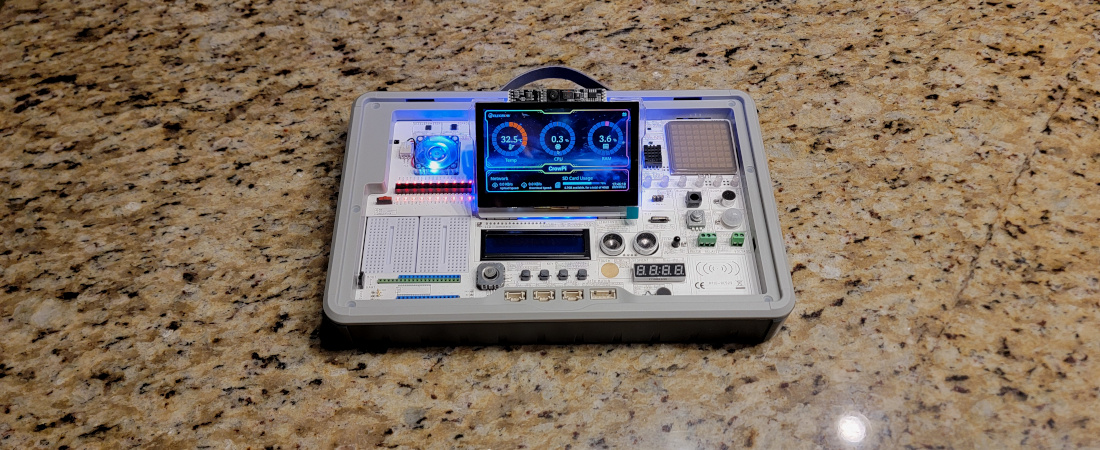Why you can trust TechRadar
We spend hours testing every product or service we review, so you can be sure you’re buying the best. Find out more about how we test.
Anthros Chair V2: One-minute review
The Anthros V2 Chair is, as the name would imply, the second iteration of Anthros’ gaming chair. Geared towards both desk workers, whether in-office or remote, and gamers alike, it is a complicated product, with more knobs and levers than your local knob-and-lever factory.
It also promises to ‘fix your sit’ which, if true in its promise, would be life-changing for anyone that struggles with posture or back pain.
There’s one caveat, however; this baby is expensive. With the base model sitting at a list price of over $2,000, before any of the optional bells and whistles you can add on, such as materials, colours, and even arm rests which come as extras, you’d be forgiven for hoping this chair might make you breakfast and do the laundry for you while you’re at it.
For context, this is far more expensive than our current favorite premium pick, the Herman Miller x Logitech Embody, and you could also buy three Branch Verve chairs for the same price, too (roughly).
Everything about the chair screams premium, though, from the materials used to the build quality of every component. I could never bring myself to spend this much money on a chair, but since I’m at my desk for a minimum of eight hours every day, comfort and back support are essential. And I’m not sure you’re going to find it anywhere better than with the Anthros V2 Chair.
(Image credit: Future)
Anthros Chair V2 review: Price and availability
- $2,146 / Around £1,600 / Around AU$3,300
- Price doesn’t include extras – even armrests
- More expensive than the Herman Miller X Logitech Embody
Outside of the astronomical price tag, what are you actually getting with the Anthros V2 Chair? How could it possibly be worth that much? Well, according to Anthros themselves, it’s all about the technology behind it, and how it’s “engineered to relieve pain”. The seat features a contoured cushion that utilises ‘Cloudtex’ and ‘Cloudfloat’ technology, as opposed to traditional office and gaming chairs, which are usually flat.
This is part of what makes the Anthros V2 Chair so comfortable to sit in for extended periods, and in my experience with it over the last four months, it works. Compared to my previous office butt-rest, which was a bog-standard gaming chair from a relatively cheap brand compared to some of the premium offerings in that department, this has been like night and day.
The seat isn’t everything, though, as the Anthros V2 Chair promises plenty of lumbar support, and this comes from two areas. The back rest is in two segments, which are “designed to promote an optimal ’S’ curve of the spine by supporting the pelvis”, according to the official site. Both are controlled individually with knobs underneath the seat, so you can position them as you see fit. It’ll feel slightly uncomfortable at first, but the idea is that the chair makes you unable to slouch by keeping your spine upright.
An important note to make folks aware of is, at the time of writing, the Anthros chair is only sold on a US-facing website, but shoppers from outside the United States can still order it with international shipping.
Anthros V2 Chair review: Specs
Swipe to scroll horizontally
Price
$2,146 (around £1,600 / AU$3,300 plus shipping from the US)
Dimensions (L x W x H)
28 x 18.3 x 43.7in (45.7 x 46.6 x 110.9cm)
Max user weight
300 lbs (136kg)
Seat width
19.8in (50.3cm)
Warranty
12 years
Finish
Athlon performance fabric
Anthros Chair V2 review: Design and aesthetics
- Premium feel…
- Except one minor part
- Lacks a headrest
I’ve talked about the cost a lot because of how jaw-dropping it is initially, but I also must stress how it isn’t completely unjustified. Every part of this chair is high quality, from the swivel base to the seat cushion, back panel, arm rests, and the control knobs.
All of the mandatory parts for the chair feel excellent, but the one exception to this is the footrest. They’ve currently dropped it from $199 to $49, which the skeptic in me would assume is because they’ve had feedback that it’s so underwhelming and cheap-feeling compared to the rest of the chair. It’s plasticky, lacks many adjustments such as the ability to raise or lower it, and it can’t even be locked at a specific tilt angle. Save your cash and pick one up from another manufacturer.
There’s also no headrest on the Anthros V2 Chair, which some folks may find frustrating. It put me off at first, but after a while, you don’t miss it. It’s easier to stay awake and alert without a headrest, and while I’d like an optional headrest attachment to use when I’m reclining and playing video games with a controller, it’s a small thing to lose when I feel better in my posture and more attentive during the working day.
(Image credit: Future)
Anthros Chair V2 review: Comfort and Adjustability
- Comfy for long periods
- You can feel a difference in your posture
- Somewhat of a learning curve
As mentioned earlier, the motto for the Anthros V2 Chair is that it will “fix your sit”, but doing that requires comfort. I am extremely happy to report this is by far the comfiest chair I’ve used for long periods… although I didn’t think that at first. It takes some getting used to because if you’re using it correctly, you’ll have the lower back section pushing into you. If you let it shape your back, then over time, your posture should improve.
Anthros are well aware that purchasing such an expensive chair is an investment, so you’re offered a video call with one of their on-staff therapists to “learn more about the chair and how it can specifically help you”.
I spoke with Anthros’ Ambassador Community Director, Ashley Williams, for 20 minutes or so, alongside carrying out this review, learning a little more about the science behind it, how they went through iterations of the product, and what it looks like underneath the shell. She also helped me set up all the various configurations to perfectly suit my height and desk setup, such as where the arm rests sit, how far forward the lower back support should be, and more.
(Image credit: Future)
That customer service goes a long way, so even though the chair was provided free of charge for review purposes, knowing that service is available to anyone who buys the chair – or who wants to discuss the product prior to purchase – it’s the sort of support you value. It’s especially helpful when you consider how many knobs and adjustments the chair has, which means it has a slight learning curve, and referring to the manual is required until you learn which part tweaks each aspect.
Four months in and I’m thoroughly impressed. If I’d spent upwards of $2,000 on the chair, would I feel the same? I’m not sure, but that’s because that’s a lot of money for me. If you’re lucky enough that this wouldn’t be such a financial investment, this is one of the best chairs on the market for long-term ergonomic support.
(Image credit: Future)
Anthros Chair V2 review: Assembly
Putting it all together is a painless experience, entirely feasible to do by yourself, and you’ll be done in under an hour.
However, this comes with a caveat. Everything with the assembly went flawlessly until the very final step, which is to install the upper back cuff.
This plastic cover for the upper back hinge refused to go on, no matter how hard I tried, so I put it down for a few days. I came back to it later, and it eventually clicked into place, but be prepared to use some serious force.
Image 1 of 4
(Image credit: Future)(Image credit: Future)(Image credit: Future)(Image credit: Future)
Should I buy the Anthros Chair V2?
Buy it if…
Don’t buy it if…
Anthros Chair V2: Also consider
If the Anthros V2 Chair hasn’t sunk its claws into you or it’s out of reach financially, consider one of these other desk chairs that promise similar results.
Swipe to scroll horizontallyRow 0 – Cell 0
Anthros V2 Chair
Herman Miller x Logitech Embody
Branch Verve
Price
$2,146 (around £1,600 / AU$3,300 plus shipping from the US)
$1,795 / £1,496
$549 (about £495, AU$860)
Dimensions (L x W x H)
28 x 18.3 x 43.7 in (45.7 x 46.6 x 110.9 cm)
29 x 29.5 x 45 in (73.7 x 74.9 x 114.3 cm)
27 x 27 x 37 to 41 in (68.6 x 68.6 x 104.1 cm)
Max user weight
300 lbs (136kg)
300 lbs (136kg)
300 lbs (136kg)
Seat width
19.8in (50.3cm)
29.5in (74.9cm)
16.5in (41.9cm)
Warranty
12 years
12 years
7 years
Finish
Athlon performance fabric
100% polyester fabric
3D knit polyester fabric
(Image credit: Future)
How I tested the Anthros Chair V2
- Used regularly for almost four straight months
- Worked from it during the day, usually locked into the upright position
- Often gamed from it in the evening, reclining with a controller in hand
I can never see myself going back to any other seat or gaming chair after using the Anthros V2 Chair for so long. My back feels better for it, and I’m looking forward to experiencing some more of the long-term benefits. As explained above, it’ll take a little while for you to start feeling positive changes, but it’s well worth sticking with it.
I work 9-5, typing and using my computer as normal, then recently I’ve started playing Rematch in the evenings on PC, for which I use an Xbox controller. I adjust the tilt and recline, keeping the back supports in the same position, so my spine still fits into that S shape.
Read more about how we test
First reviewed: August 2025










